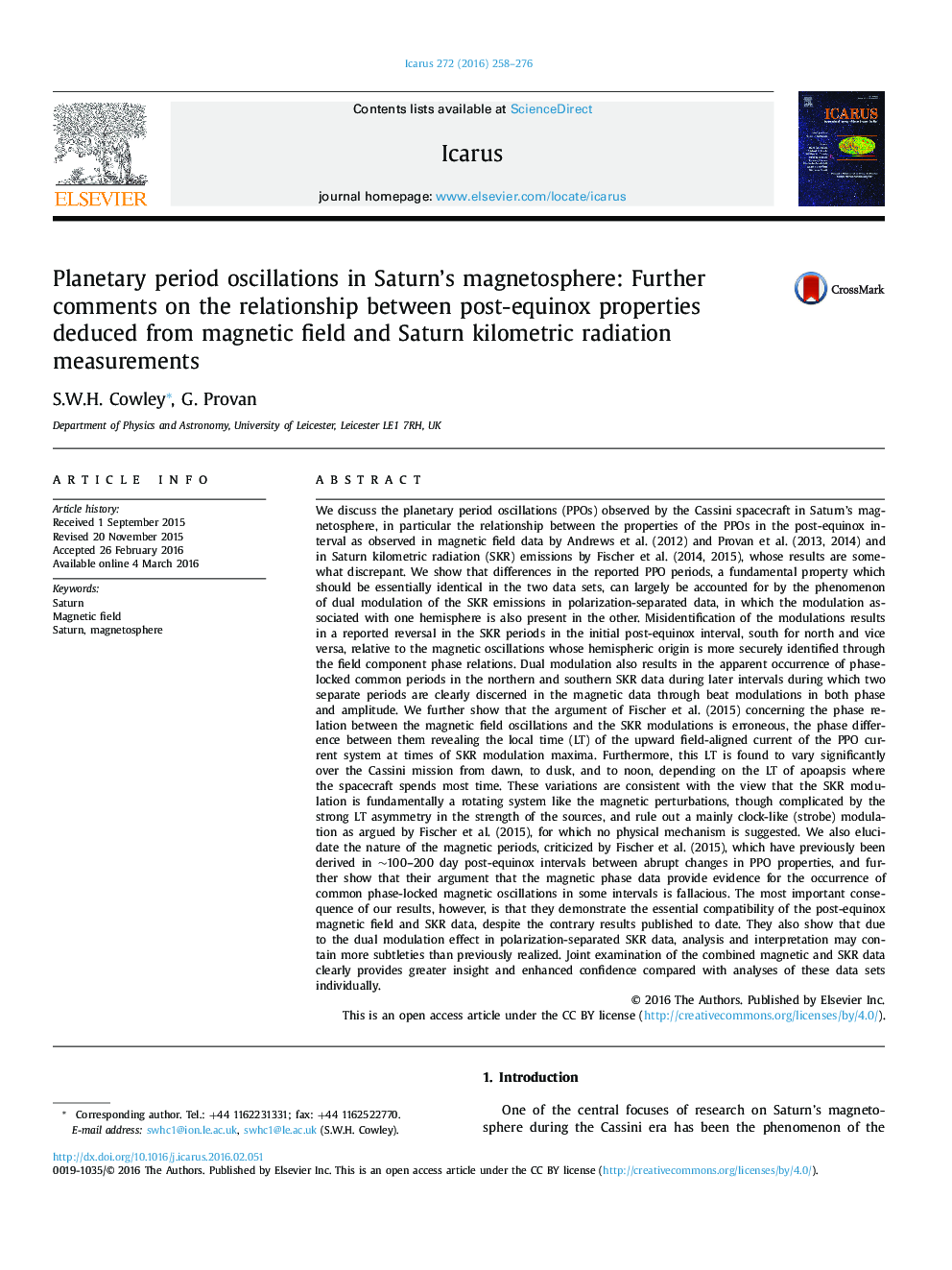| Article ID | Journal | Published Year | Pages | File Type |
|---|---|---|---|---|
| 8135304 | Icarus | 2016 | 19 Pages |
Abstract
We discuss the planetary period oscillations (PPOs) observed by the Cassini spacecraft in Saturn's magnetosphere, in particular the relationship between the properties of the PPOs in the post-equinox interval as observed in magnetic field data by Andrews et al. (2012) and Provan et al. (2013, 2014) and in Saturn kilometric radiation (SKR) emissions by Fischer et al. (2014, 2015), whose results are somewhat discrepant. We show that differences in the reported PPO periods, a fundamental property which should be essentially identical in the two data sets, can largely be accounted for by the phenomenon of dual modulation of the SKR emissions in polarization-separated data, in which the modulation associated with one hemisphere is also present in the other. Misidentification of the modulations results in a reported reversal in the SKR periods in the initial post-equinox interval, south for north and vice versa, relative to the magnetic oscillations whose hemispheric origin is more securely identified through the field component phase relations. Dual modulation also results in the apparent occurrence of phase-locked common periods in the northern and southern SKR data during later intervals during which two separate periods are clearly discerned in the magnetic data through beat modulations in both phase and amplitude. We further show that the argument of Fischer et al. (2015) concerning the phase relation between the magnetic field oscillations and the SKR modulations is erroneous, the phase difference between them revealing the local time (LT) of the upward field-aligned current of the PPO current system at times of SKR modulation maxima. Furthermore, this LT is found to vary significantly over the Cassini mission from dawn, to dusk, and to noon, depending on the LT of apoapsis where the spacecraft spends most time. These variations are consistent with the view that the SKR modulation is fundamentally a rotating system like the magnetic perturbations, though complicated by the strong LT asymmetry in the strength of the sources, and rule out a mainly clock-like (strobe) modulation as argued by Fischer et al. (2015), for which no physical mechanism is suggested. We also elucidate the nature of the magnetic periods, criticized by Fischer et al. (2015), which have previously been derived in â¼100-200 day post-equinox intervals between abrupt changes in PPO properties, and further show that their argument that the magnetic phase data provide evidence for the occurrence of common phase-locked magnetic oscillations in some intervals is fallacious. The most important consequence of our results, however, is that they demonstrate the essential compatibility of the post-equinox magnetic field and SKR data, despite the contrary results published to date. They also show that due to the dual modulation effect in polarization-separated SKR data, analysis and interpretation may contain more subtleties than previously realized. Joint examination of the combined magnetic and SKR data clearly provides greater insight and enhanced confidence compared with analyses of these data sets individually.
Related Topics
Physical Sciences and Engineering
Earth and Planetary Sciences
Space and Planetary Science
Authors
S.W.H. Cowley, G. Provan,
